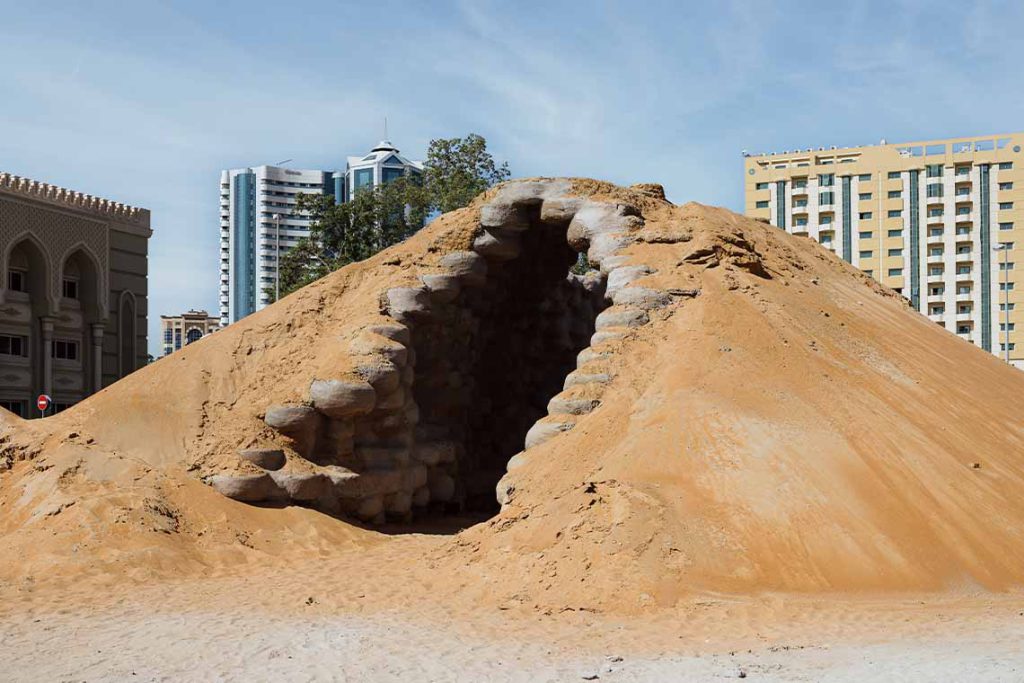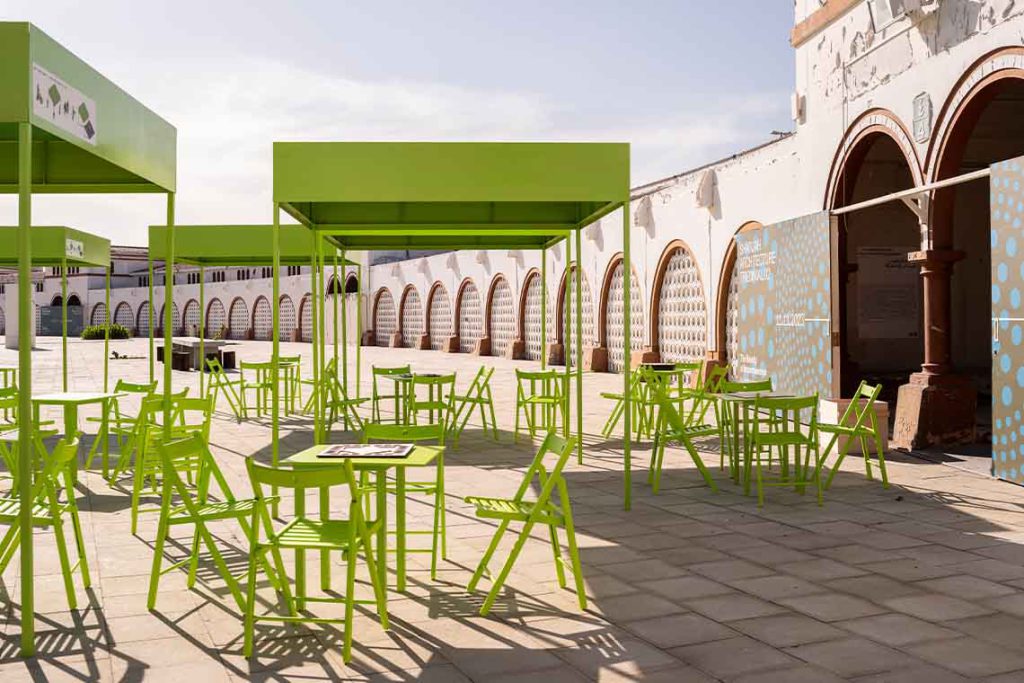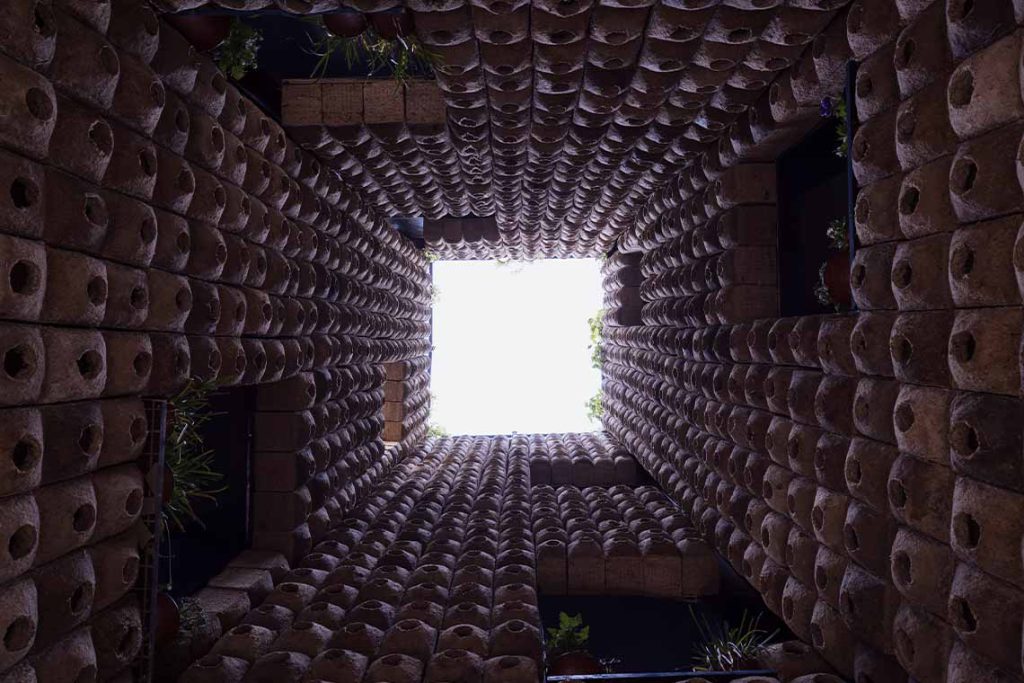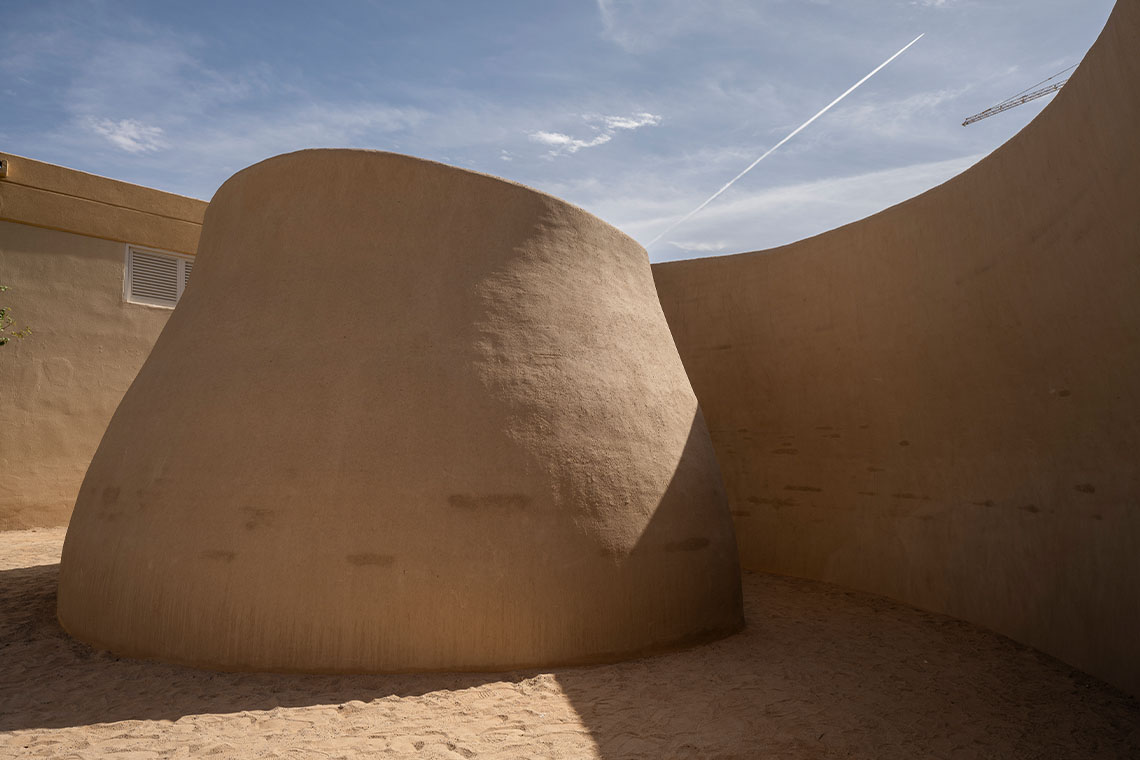This year’s Sharjah Architecture Triennial recentres indigenous and vernacular building knowledge towards a more ecological future of construction. What is the significance of such an exhibition in the context of Sharjah, positioned at the crossroads of Global North and South?
The vertical growth of the UAE over recent decades has been extraordinary. The eruption of glass and steel structures has become increasingly fantastical, pushing the boundaries of engineering, aesthetics and – arguably – taste. The discipline of architecture, however, is far deeper and more nuanced than such Instagrammable icons, sitting as it does at a confluence of design, power, economics, history, material, land, nature, climate, politics, community and much more besides. The second edition of the Sharjah Architecture Triennial seeks to tackle many of these vantages in terms of how we build the world around us.
Opening with a series of installations, constructions, talks and events focused on the rediscovery and recognition of traditional, historic and indigenous modes of designing places, this edition of the Triennial is curated by British-educated, Nigerian-born-and-based architect Tosin Oshinowo. It seeks to provoke timely questions around how architecture might become less reliant upon an industrial manufacture that is often totally unsuited to most climates and cultures, exploring approaches by practitioners from across the globe to build knowledge around equitable and ecological construction.
It all hangs under the title The Beauty of Impermanence: An Architecture of Adaptability, described by Oshinowo as a “metaphor that draws attention to the built environment’s design and technological innovations visible in the Global South.” She celebrates such innovations as vernaculars and strategies developed in response to the scarcity of natural resources yet also rooted in conditions of global inequality and power imbalance. “Sharjah will play backdrop and actor for the exhibition,” Oshinowo continued, “allowing participants to create a point of exchange and transpose ideas through site-specific interventions.”
The majority of the Triennial is located across the former classrooms and courtyards of Al Qasimiyah School, where visitors explore a mix of built and conceptual propositions that include an intriguing installation from Sandra Poulson. Considering urban dust not as a mess but as social and economic opportunity, the Angolan artist has built an immersive imaginary entrance to Luanda’s Kikolo Market by using discarded cardboard and starch to create an assemblage of street objects – hanging clothes, pallets, pots and crates – in a gestural invitation to consider how materials we may view as waste might be reused and revalued.

This idea of revaluing is also at the heart of other, less conceptual, projects. BUZIGAHILL is a Kampala-based clothing brand that collects discarded fast-fashion clothes shipped to Uganda as waste from the Global North and then creatively upcycles them into fashion garments that are returned to their original countries and resold at high value. For the Triennial, the brand has built an entire design and manufacture workshop, creating fashion garments from piles of unwashed clothes taken from one of Sharjah’s Free Zones – low-bureaucracy sites of zero taxation, import, export and custom dues, where migrant workforces unpack and sort Europe’s unwanted clothing on a daily basis.
The BUZIGAHILL project not only sheds light on how the UAE sits structurally and economically at the centre of global networks, but also raises questions around the Global North/South binary. It’s a debate highlighted by Oshinowo in her opening remarks: “The Global North, through land conquest, slavery, resource extraction, and technological advancement – all justified by mythological and religious beliefs – has encouraged the positioning that mankind has infinitely been ordained to multiply with dominion over all things.”
Oshinowo’s curatorial framing of a Global South in binary opposition to a Global North seems to invoke language and notional geographies which oversimplify the contemporary situation. For the purposes of discussing the imprint and impact of the Global North since the Industrial Revolution and through modernism, there is a risk that nuances and complexities of place and history can be lost. While the UAE is positioned within the Global South, according to the United Nations Conference on Trade and Development, the region’s cultural, political and financial prowess exceeds that of many nations considered part of the Global North.
Of all the Emirates, Sharjah has perhaps done most to reject spectacle and iconicism in its new urban form, making it an interesting location for an architecture triennial – it’s safe to assume that one based in Dubai, for example, would be something rather different – and through the rebuilding and reimagining of its historic souk is looking towards new models of creating a sense of place. Complex and often controversial issues are never far away, however. Concerns continue over the rights of workers in the region’s burgeoning construction industry, while the cycle of boom and wealth is borne by carbon- intensive extraction, immediately visible in the glass, steel and concrete buildings shooting up around the Triennial sites. None of this is questioned by a curatorial theme which seeks to speak to other places while using the Emirate as a stage.

Around the school, various pavilions test ideas which counter a reliance upon such extraction. Henry Glogau from New Zealand and Aleksander Kongshaug from Denmark have collaborated on Resource Autonomy (2023), a series of low-tech, flexible bamboo and cotton buildings. Proposing community-built, flexible and scalable construction, their three pavilions also offer functional uses with the provision of shade, water storage, solar desalination and air purification.
Equally resourceful but more substantial in terms of physical impact is 3-Minute Corridor (2023) by Wallmakers, an Indian organisation dedicated to utilising mud and waste matter as primary components within sustainable architecture. For the Triennial, their cave-like tunnel is formed of 1425 waste tyres packed with sand, cement and rebar to form a dome under 40 tonnes of desert sand, the interior finished with a chicken-wire mesh supporting hand-applied clay to create a cooling, enclosing space of transition. Further thought-provoking insights are provided by Ghanaian studio Hive Earth through an immaculately finished geometric structure made of rammed earth. ETA’DAN (2023) (Fante for ‘mud wall’) is a deconstructed intersecting sculptural form offering scope for play by children and intellectual curiosity from adults. Another earthen intervention comes from Sumaya Dabbagh, whose Earth to Earth (2023) space – formed of inward-leaning, interlocking mudbrick walls – provides a space of reflection with calming light, temperature and acoustics.
As a Saudi-born architect now working from Dubai, Dabbagh is the only lead participant of 46 named collaborators at the Triennial to have a direct connection to the UAE. However, some of the participants have used local artisans and materials or considered local site specificities in their projects. Peru’s 51-1 Arquitectos give the city a simple offer with a cluster of bright green movable chairs, tables and canopies with a box of free-to-use board games sitting alongside. It’s a project designed to provide shade and a moment’s pause near the busy bus station, creating an opportunity for chance encounters and friendship across cultures.

Papa Omotayo and Eve Nnaji, of Lagos-based firms MOE+AA and ADD_apt respectively, spent days walking and ‘learning’ Sharjah before discovering an industrial zone side street that became the site of their intervention. The architects encountered migrant workers of various nationalities taking their breaks around the numerous ad hoc birdcages built on the spaces between warehouses and other infrastructure by those with shared bird-keeping interests. To celebrate and expand on these urban interventions, Omotayo and Nnaji built We Rest at the Bird’s Nest (2023) as a structural expression of inter-species social cohesion – the central atrium of their blue scaffold tower contains hundreds of handmade birdboxes, moulded from wastepaper and grass, free for birds to fly in and use at their will.
Omatayo and Nnaji’s project celebrates a delicate moment of humanity and care carved into the city by its often-invisible migrant workers – highlighting just one of doubtlessly thousands of such social and cultural interventions. It speaks to a comment made by architectural educator Rahul Mehrotra to Lesley Lokko, curator of this year’s Venice Architecture Biennial (which has many overlapping themes with Sharjah), in an opening-day conversation that explored ideas of in-betweenness, ambiguity and translated vocabularies in a desire to separate absolutes and permanence from ideas of progress: “In every city in the Global North there is a city of the Global South present, and vice versa.”
It is notable that in We Rest at the Bird’s Nest a moment emerges in which Sharjah becomes the subject, rather than the background setting for ideas from other places. The city’s physical location – whether that be at the interface of Africa and Europe, as in the Triennial’s curation by Oshinowo, or as the connector between Asia and Europe – is significant, but for all the excellent work presented, little of it seems to speak directly to the immediate context of Sharjah. Perhaps the Triennial can address this deficit as it plans the trajectory towards its third edition and beyond. Ideally, additional space could be made to critically and profoundly interrogate local conditions, involving more regional practitioners and curators, which would see the Triennial evolve into a platform that not only speaks of external ideas to an international audience, but also helps shape the very structures and ideas of progress within Sharjah itself.
The Sharjah Architecture Triennial runs until 10 March 2024
This review first appeared in Canvas 111: Crafting the Contemporary



